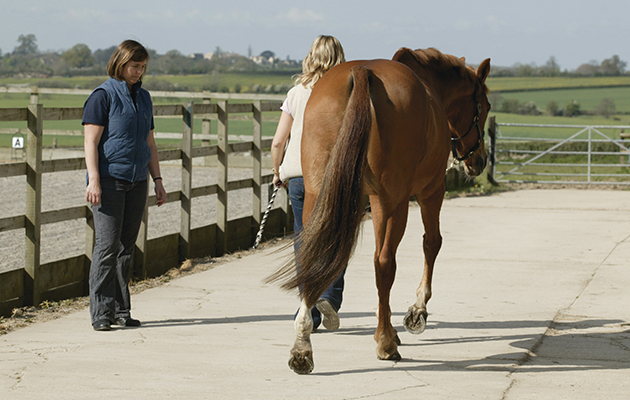Riders are struggling to tell when their horse is lame, a recent study has found.
Almost half of the 57 “sound” sport horses involved in the project were in fact lame when ridden, found Dr Sue Dyson and Line Greve of the Animal Health Trust.
Only horses in regular work and believed to be sound by their riders, trainers and owners were selected for last year’s study.
The sample of horses was chosen from a professional showjumping yard, a dressage competition yard, a dressage training centre and a private dressage yard.
The horses were assessed in hand, on the lunge on both soft and firm surfaces, and ridden. Flexion tests on all four limbs were carried out and lameness was graded between zero and eight. In total, only 14 horses were sound under all circumstances.
Dr Dyson told H&H she believes owners and riders need to have a better awareness of when their animals are lame.
Of those tested, 27 (47%) showed lameness while ridden and seven were unsound only when ridden. Six were sound in-hand, on the lunge and ridden, but showed a grade one or two lameness after a flexion test on a single limb. Sixteen were lame in-hand, 24 showed lameness on the lunge on a soft surface and 23 were unsound on the firm surface.
The sample included 47 warmbloods, seven ponies and three Arabians, who ranged from three to 13 years old. The showjumpers competed at 1m to 1.40m and dressage horses from novice to grand prix.
The study found that there was no significant relationship between age or work discipline and lameness.
The study concluded that a horse being sound on a straight line “is not a reliable indicator of soundness”, and that riders “may be poor judges of lameness”.
Related articles:
- Grading lameness: how it works *H&H VIP*
- How to trot up your horse for the vet
- 14 ways to keep your horse’s legs healthy
“Unless you see a horse ridden, you are going to miss lameness,” Dr Dyson added.
“Ridden exercise is standard practice in a five-stage vetting, but a lot of people only do it to listen to a horse’s breathing rather than watching the horse’s gait. In many cases it is not used as well as it might be to assess how the horse is moving.”
H&H vet Karen Coumbe suggested a possible explanation for the findings could be that riders become accustomed to the way their own horse moves, which may explain why they do not notice lameness.
She added that it makes sense to obtain an impartial expert view.
The findings of the study were published online in the Journal of Equine Veterinary Science on 4 January.
Ref: H&H 11 February, 2016

